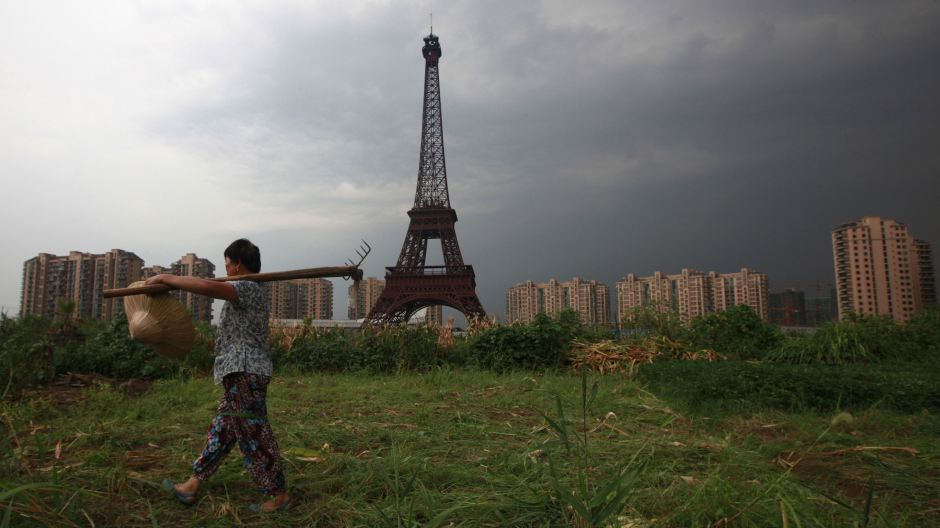China’s investment in infrastructure is exactly what made Alibaba’s IPO possible
Quartz |

By Parag Khanna and JT Singh
Alibaba’s recent IPO and early market capitalization of $230 billion brought repeated reminders that its value has catapulted ahead of that of Amazon. and eBay combined. What has allowed the Chinese e-commerce giant to grow so massively is the confluence of urbanization, infrastructure investment and digital connectivity, together providing the foundation for an efficient network across hundreds of first-, second- and third-tier cities.
Over the past decade, both of us have traveled extensively in all corners of China and witnessed this “next China” emerging. Visiting China’s next urban tier scattered about the country reveals the flaws in the Western economic critique of China. While prominent economists continue to deride China’s over-investment in infrastructure, it is precisely what makes rags to riches stories like Alibaba possible. As the World Bank demonstrated in a report published in 2013, high-speed rail, for example, has been a crucial factor in promoting geographic and thus social mobility in the aftermath of the financial crisis when many export-dependent jobs suddenly evaporated.
One should think of China not as a monolithic empire but a lattice of cities whose increasingly dense ties follow Metcalfe’s Law: the value of a network increases exponentially as the number of connections grows. Alibaba’s investors certainly see it that way.
Currently, according to research by McKinsey, 600 urban centers represent 60% of the world’s GDP. By 2025, 100 of the world’s top 600 economic cities are projected to be in China. While this is proportionate to China’s share of the world population, the urban base means a significantly accelerated capacity for economic growth, which occurs much faster in cities—and particularly in connected cities. Importantly, China has 200 cities with a population of at least one million, the minimum population required for sustained economic diversification.
Given China’s massive urbanization campaign, there is much more still to build. Yet visiting China’s thriving interior second-tier cities reminds of how quickly the image of China as the world’s factory floor is being superseded. While millions of poor migrants still sweat long hours on assembly lines producing cheap goods, new industries in the technology and services sectors are rapidly replacing traditional manufacturing as the driver of employment and wage growth. Just think of PC-maker Lenovo and telecoms giant Huawei.
It has surprised many foreigners that China’s new vanguard of global companies are not even based in Beijing or Shanghai. Alibaba was founded and remains headquartered in Hangzhou, while Tencent (which operates the popular WeChat messaging service) is based in Shenzhen, as is Huawei. SunTech Power, the world’s largest solar panel producer, is located in Wuxi, which has become a hub for China’s renewable energy industry.
Companies fall into a spectrum in their dealings with China. Some are already deeply embedded, with significant product development, manufacturing, and sales in China—examples include Siemens, Hewlett-Packard, Coca-Cola and others. Some are limiting their exposure to China and seeking alternative production centers. Taiwan’s FoxConn, for example, is building new assembly plants for iPads and other electronics in Indonesia and even the US (but aims to staff them with robots, not humans). A very large swath of multinationals, however, is just now in the research phase about where to build (or build out) their footprint on the mainland. For these companies, a whole new urban geographic vocabulary awaits. Indeed, even as net foreign investment into China decreases as multinationals seek lower-wage production elsewhere in Asia, multinationals are also flocking into China to expand sales into the emerging urban middle class. Expats moving to China to promote exports and sales will increasingly find themselves, in addition to the aforementioned cities, living in Tianjin, Guangzhou, Chongqing, Nanjing, Wuhan, Shenyang, Suzhou, Foshan, Dalian and other currently second-tier urban centers whose populations and economic gravity are steadily rising on the back of multi-industry cluster strategies.
These cities have also launched intensive campaigns to attract domestic and foreign talent. While Shanghai has no trouble recruiting the best and brightest, Foshan, a manufacturing hub in southern Guangdong province, has just hired five foreigners to work in the government exclusively on luring fresh FDI and residents. Bear in mind that as China’s industry cleans up, southern China will get a fresh look. Fuzhou, for example, in Fujian province, is the ancestral home of many overseas Chinese diaspora in Southeast Asia looking for a foothold back on the mainland, and is also ranked one of the most livable cities in China. Upon his election as the new Indian prime minister, Narendra Modi immediately announced plans to construct 100 new cities from mixed-use developments to special economic zones to stimulate Indian urbanization, job creation and growth. If America was home to the “consumer of last resort” in the twentieth century, in the twenty-first century it will be urban Asia whose consumption propels world economic growth.